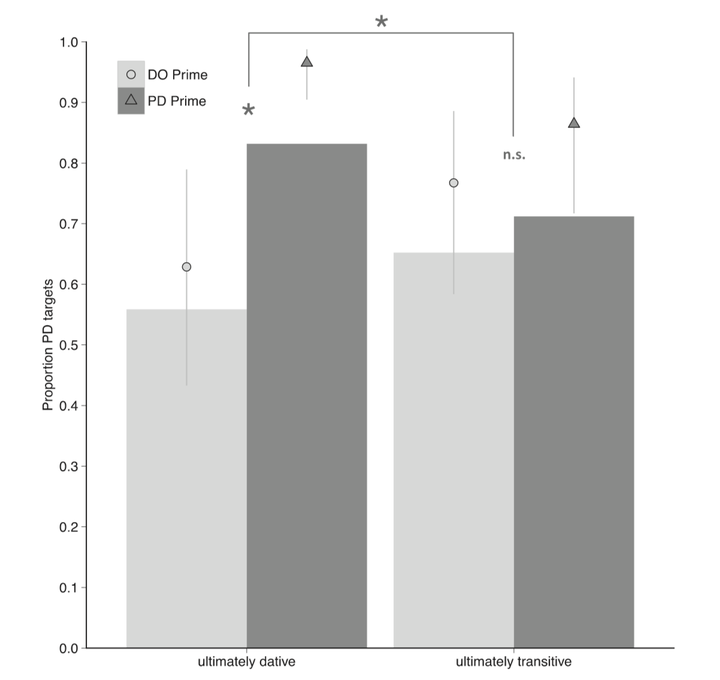
Abstract
Natural language contains disfluencies and errors. Do listeners simply discard information that was clearly produced in error, or can erroneous material persist to affect subsequent processing? Two experiments explored this question using a structural priming paradigm. Speakers described dative- eliciting pictures after hearing prime sentences that either were disfluent but with a consistent dative structure or were sentences that began as datives but were corrected to transitives (e.g., The mechanic is giving the new part . . . uh . . . is recognizing the new part). If an erroneous and corrected sentence fragment is discarded, then the original form of an ultimately transitive utterance should not influence future production. However, if the syntactic parse of an error is not discarded, then it should influence speakers’ subsequent choice of syntactic structure. In both experiments, structural priming was signifi- cantly reduced when primes were corrected to a non-dative structure (relative to disfluent but ultimately dative primes). However, target descriptions did show an influence from corrected errors when the prime and target shared the same verb. Thus, a parse mapping a verb to a specific argument structure can persist despite being explicitly marked as an error, reflecting the incremental and predictive nature of compre- hension.